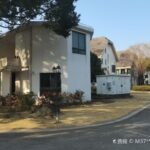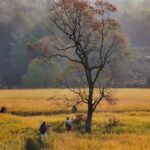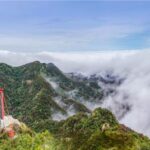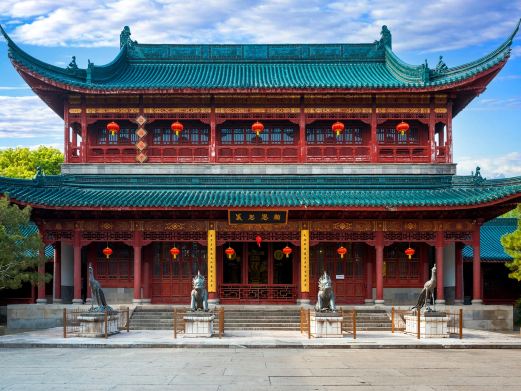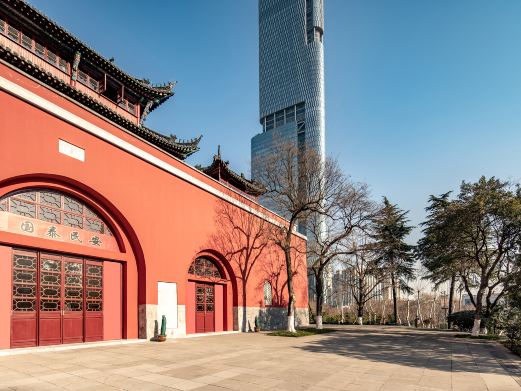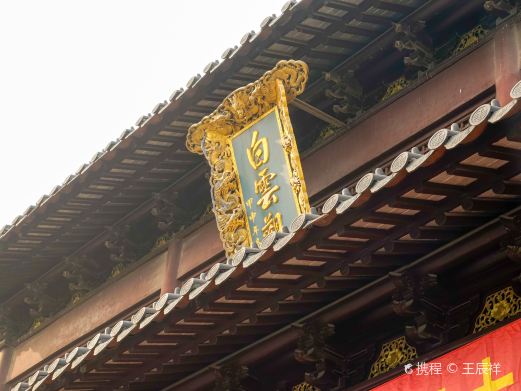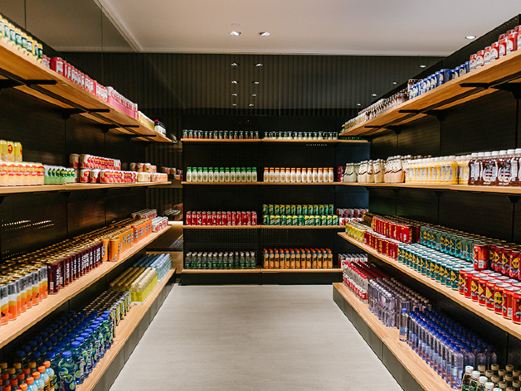Tianning Temple, originally established during the Tang Dynasty’s Zhenguan era, is one of the birthplaces of Buddhist music and chanting. It stands today as a significant temple in Changzhou, known for its ‘great halls, large Buddha statues, massive bells, large drums, and enormous treasure tripods,’ with the Mahavira Hall alone being as tall as a ten-story building.
Built in 2007, the Tianning Pagoda within the temple complex is one of Changzhou’s landmarks. Situated north of the city’s largest park, Hongmei Park, and south of the Beijing-Hangzhou Grand Canal, the temple is conveniently located only 1.5 kilometers from Changzhou Railway Station and Changzhou Bus Terminal.
The main structures of the temple are aligned along a north-south axis. The main entrance is at the southern end, leading to a sequence from south to north of the mountain gate, halls, Mahavira Hall, Jade Buddha Hall, and the Three Jewels Hall. To the east and west of the halls are the Manjushri Hall and Samantabhadra Hall, respectively. The east and west sides of the Mahavira Hall are the Guanyin Hall and Ksitigarbha Hall. The square between the halls and the Mahavira Hall is flanked by the Eastern and Western Arhat Halls. The eastern side of the Jade Buddha Hall houses the abbot’s chamber and upper guest rooms, while the western side is reserved for the monks’ quarters.
Other structures along the west side of the central axis include the Buddhist College, Precept Hall, Release Pond, and Damo Pavilion. The halls and Mahavira Hall are renowned for their grandeur, with the hall standing over 23 meters tall, housing four towering figures at 7.8 meters high, which are considered exceptionally tall within the country. The Mahavira Hall reaches 33 meters in height, with two sundials in front, three Buddhas of the past, present, and future in the center, an island Avalokitesvara at the back, twenty heavenly beings on either side, a massive bell weighing 4 tons at the right front corner, and a large drum with a diameter of about 2 meters at the left front corner.
At the northern end of Tianning Temple stands the Tianning Pagoda, with a pair of white Nine-Dragon pillars and two enormous incense burners for Fu, Lu, and Shou in front. The base of the pagoda is encircled by four large statues and eight copper sculptures of elephants. The pagoda features an underground palace and thirteen above-ground levels, with a gilded Vajra throne-shaped spire at the top. All interior elements such as pillars, railings, ceilings, stairs, handrails, and thresholds are made of nanmu wood. Each level displays different Buddhist treasures according to various themes, including exquisite Buddha statues, totems, and root carvings, making it akin to a Buddhist museum.
The Tianning Pagoda is accessible by elevator to the 12th level, from where visitors are advised to walk up to the top and then descend floor by floor for a guided tour. The fifth level features the Dharma Realm Origin Pavilion, carved from several tons of agarwood, the twelfth level houses the Ancient Buddha Hall with precious camphor wood Buddhas from past dynasties, and the thirteenth level is home to the Ten Square Harmony Hall, which enshrines the ‘treasure of the pagoda,’ a natural crystal Buddha, all of which should not be missed. At the top of the pagoda, there is a massive bell weighing 15 tons and standing 118 meters high; however, striking the bell three times comes at a relatively high cost.
The Tianning Pagoda also offers an excellent vantage point for sightseeing, with panoramic views of Changzhou city, Tianning Temple, and Hongmei Park. Every year on December 31st, Tianning Temple hosts a bell-ringing event to welcome the New Year.
Visiting Tianning Temple during significant Buddhist festivals allows you to hear the renowned Tianning chanting. When Xu Zhimo visited Lu Xiaoman’s hometown, Changzhou, he listened to the chanting at Tianning Temple and later wrote the poem ‘Changzhou Tianning Zen Temple Hearing the Sound of Repentance’.
The Tianning Temple Ruyi Vegetarian Restaurant, located to the east of the temple’s mountain gate, offers vegetarian meals, with their vegetarian noodles being quite popular.
There are several places within the temple where Buddhist items can be purchased, including to the left of Samantabhadra Hall, to the right of Manjushri Hall, on both sides of the Three Jewels Hall, near Guanyin Yuan to the west of Tianning Pagoda, and inside the Tianning Pagoda itself for obtaining Buddhist instruments.
After visiting Tianning Temple, you can take a leisurely stroll in the adjacent Hongmei Park, or walk to the nearby Cultural Palace Commercial Street for shopping, or take a boat ride in Dongpo Park along the ancient canal.
The temple is open all year round from 06:30 to 17:00, and the Tianning Pagoda from 08:00 to 17:00, with last entry at 16:00. Parking facilities are available at: [Tianning Temple (Tianning Scenic Area) Parking Lot] with a reference price of ¥10 per entry; the address is No. 636 Yanling East Road, Changzhou, Jiangsu Province; and there are 26 parking spots available.
Tianning Temple: A Majestic Buddhist Landmark
Tianning Temple, originally established during the Tang Dynasty’s Zhenguan era, is one of the [...]

